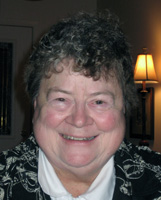
Listening to a Peer
When my sister-in-law Joanne was diagnosed with cancer, my wife, Patti, immediately began searching the Internet for information and one of the most useful websites that she found was a blog being written by a woman undergoing cancer treatment. Patti became a faithful reader and found this woman’s writings helpful and inspiring. Up until Joanne’s death last year, Patti felt that she, Joanne, and the blogger were in the same foxhole.
No one thinks it’s odd to ask for direction from someone who has gone through a life-altering illness — except when it comes to mental disorders. Too often, persons with mental illnesses are ignored even after they have recovered from all symptoms of their illnesses. Part of the reason for this is stigma and the deeply held belief that persons who are “mentally ill” can’t be trusted to take charge of their own lives. 
Let me be clear here because this is an emotional subject, especially among parents, of which, I am one. When Mike became psychotic, I did not listen to his ranting. I stepped-in and did what I believed any decent human being would do when someone they love becomes so obviously mentally unstable that they need an intervention.
Another Example of The Power of One

Common Sense, Huge Impact
One of the lessons that I’ve learned visiting mental health programs in 46 states during the past four years is how often a small, common sense change in policy can have a huge impact on helping persons who are ill. 
I saw an example of this when I toured the Los Angeles City Jail, which many of you know has become the largest de facto public mental heath facility in our nation with an average population of 1,400 prisoners with mental disorders.
A Mother Who Lost Her Daughter But Is Saving Others One House At A Time
Today is Mother’s Day and I would like to tell you about an extraordinary mother who also is an amazing mental health advocate. Her name is Trudy Harsh and she lives in Fairfax, Virginia.
Trudy’s daughter, Laura, developed a brain tumor when she was eight years old. Doctors at Georgetown Hospital in Washington D.C. were able to remove it, but they warned Trudy that Laura would only live for six more years at best. 
Crisis Care Centers vs ERs
The first time Mike became psychotic, I drove him to a hospital emergency room. We didn’t know any psychiatrists and Mike needed immediate help. Taking him there turned out to be a mistake.
Emergency rooms are where everyone goes nowadays whenever they have any kind of health-related crisis, but many are poorly equipped to deal with psychiatric patients in the midst of a mental break. 
Some patients are turned away, as Mike and I were, without getting help. Or a patient might be held down and given a shot of Haldol or another strong anti-psychotic that will help stabilize him but also can turn him into a walking zombie for days.


